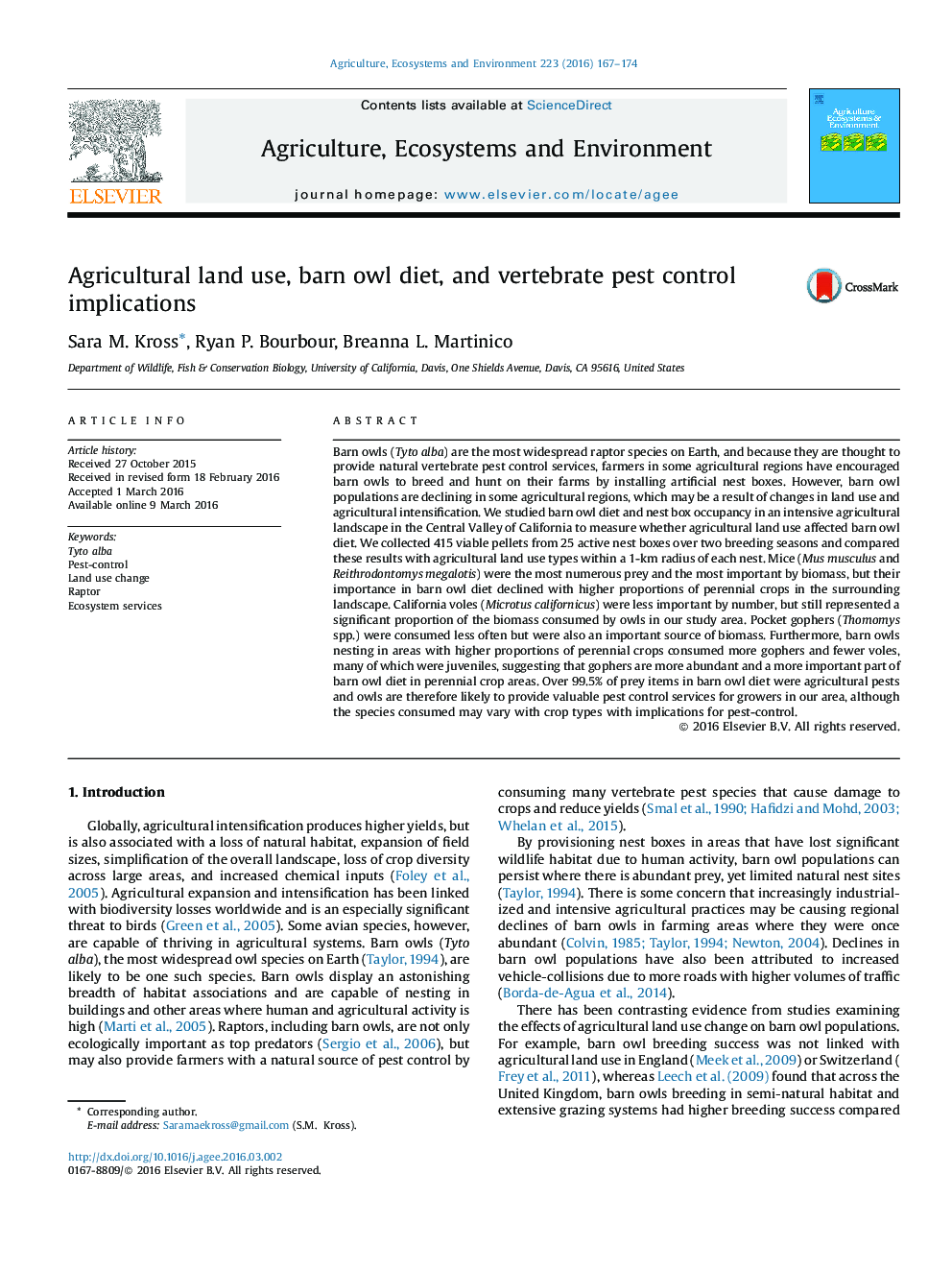| کد مقاله | کد نشریه | سال انتشار | مقاله انگلیسی | نسخه تمام متن |
|---|---|---|---|---|
| 2413495 | 1552029 | 2016 | 8 صفحه PDF | دانلود رایگان |
• Barn owls may provide valuable vertebrate pest control services for farmers.
• Diet of nesting barn owls was measured across a gradient of different crop types.
• Barn owls nested or roosted in over 55% of nest boxes.
• 99.5% of prey were agricultural pest species.
• The importance of different prey species in owl diet varied with crop type.
Barn owls (Tyto alba) are the most widespread raptor species on Earth, and because they are thought to provide natural vertebrate pest control services, farmers in some agricultural regions have encouraged barn owls to breed and hunt on their farms by installing artificial nest boxes. However, barn owl populations are declining in some agricultural regions, which may be a result of changes in land use and agricultural intensification. We studied barn owl diet and nest box occupancy in an intensive agricultural landscape in the Central Valley of California to measure whether agricultural land use affected barn owl diet. We collected 415 viable pellets from 25 active nest boxes over two breeding seasons and compared these results with agricultural land use types within a 1-km radius of each nest. Mice (Mus musculus and Reithrodontomys megalotis) were the most numerous prey and the most important by biomass, but their importance in barn owl diet declined with higher proportions of perennial crops in the surrounding landscape. California voles (Microtus californicus) were less important by number, but still represented a significant proportion of the biomass consumed by owls in our study area. Pocket gophers (Thomomys spp.) were consumed less often but were also an important source of biomass. Furthermore, barn owls nesting in areas with higher proportions of perennial crops consumed more gophers and fewer voles, many of which were juveniles, suggesting that gophers are more abundant and a more important part of barn owl diet in perennial crop areas. Over 99.5% of prey items in barn owl diet were agricultural pests and owls are therefore likely to provide valuable pest control services for growers in our area, although the species consumed may vary with crop types with implications for pest-control.
Journal: Agriculture, Ecosystems & Environment - Volume 223, 1 May 2016, Pages 167–174
